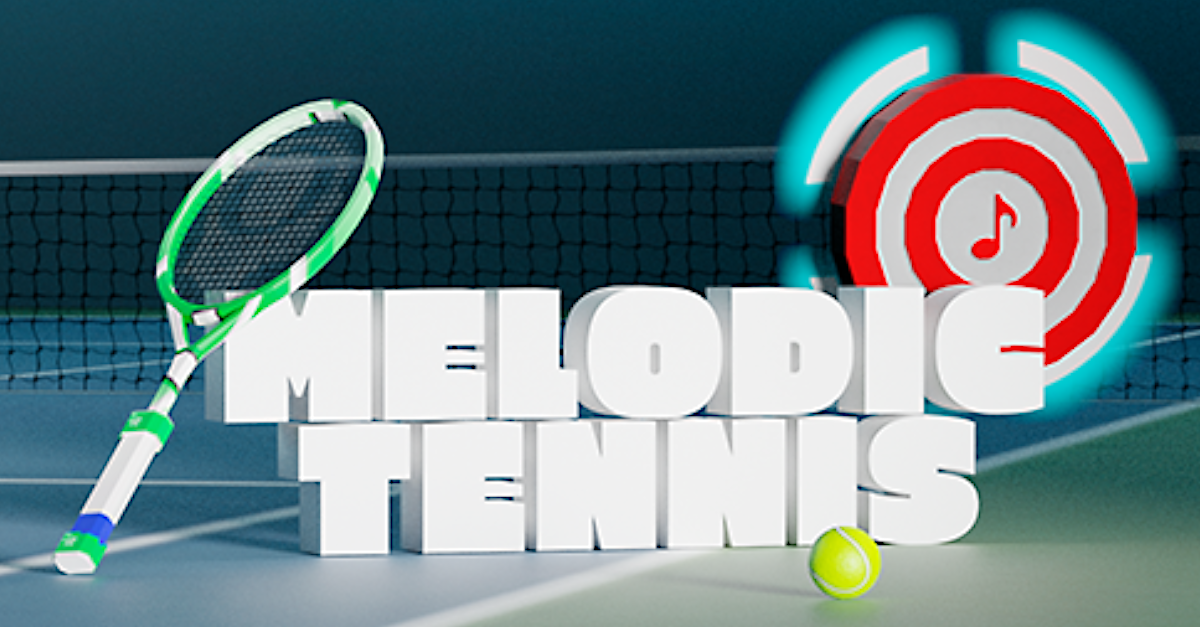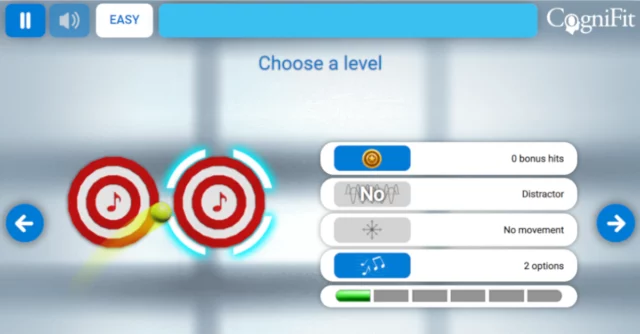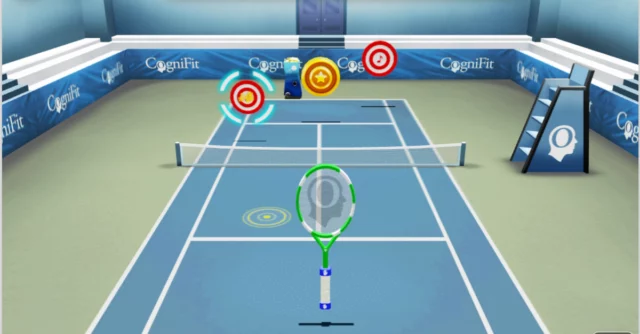
Melodic Tennis – Flex Your Spatial Perception
CogniFit is thrilled to showcase another of its brain training games – Melodic Tennis!
Now, you’re probably thinking that these two words don’t really go together. But when it comes to exercising the cognitive functions of Auditory Perception, Recognition, and Spatial Perception, it’s actually a perfect fit! Let’s take a closer look at how the game works, the importance of each of these brain functions, and some other interesting tidbits.
How Does The Game Work?
If you haven’t created a CogniFit account, you’ll only have one level option. But don’t worry, signing up is free so lets play some brain games! Once you’re in the game interface, you’ll have the choice of which level you want to start with. If you haven’t played this kind of game before, it’s recommended to start on the beginner’s level and work your way up, so you don’t feel overwhelmed.

You’ll find yourself on one side of a tennis court with a racket in front of you. On the other side are targets and a tennis ball machine. A ball will be shot your way and you have to move the racket to hit the ball and then hit an opposing target.
But here’s the twist.
Each target you hit will make a certain tone or give you extra points.
Once you’ve hit all your targets, you’ll play back several different musical note sequences. Your job is to choose which one you made while you were playing.
As the levels get harder, the racket’s range of movement increases, there are more noise distractors, and there are more targets to hit (and therefore remember).

Melodic Tennis & Auditory Perception
On the surface, it feels like we hear a sound and just recognize it. But it actually goes through a complicated string of processes in our brain. Besides recognizing the tone, timbre, intensity, and duration of sound waves, we also have to be able to do the following…
- Detect: get any sound waves within audible range of our ears
- Discriminate: Be able to filter out what you want/need to hear from the background noise around you
- Identify: Know what the sound is – if it’s your friend’s voice or the sound of a guitar
- Comprehension: Understanding the meaning of a sound – eg. a bell signalling class is over
Many people associate deafness with auditory problems. However, there are so many more issues that can happen with our auditory perception. Amusia is when someone can’t recognize music. Tinnitusis the constant ringing in our ears. There is also such a thing as musical halluciantions – when someone hears music that isn’t there.
The tones played in Melodic Tennis and their playback are part of the brain training that helps with Auditory Perception.
Melodic Tennis & Recognition
Recognition can often be confused with memory. And while memory is part of it, there is so much more to this essential procsess. It allowes us to take in the information around us and compare it to what is already stored in our mind.
But did you know the brain can creative “negative” results in our regognition?
- False Positive – Where you think you recognize something you’ve never actually seen before. Like thinking you know a store you’ve never been to before.
- False Negative – Where you can’t remember something you have been exposed to before. Like not being able to remember someone’s name.
One of the most common issues with poor recognition is Alzheimer’s Disease. However, stroke or chronic traumatic encephalopathy can create problems too.
So, within the musical tennis game, you have to use recognition with the tones that come from the targets that you hit as well as from the playback afterward.

Melodic Tennis & Spatial Perception
Spatial perception is the ability to be aware of and understand your relationship to the environment around you. Without it, we wouldn’t be able to conceive of things like 2D or 3D. To do this, the brain breaks this process down into to subprocesses…
- The Exteroceptive process creates representations about our space through feelings
- The Interoceptive process creates representations about our body, like its position or orientation.
Our eyes take in what’s around us and processes the information, while our body (haptic system) uses touch and physical sensations to add more information to the impressive mountain of instantaneous calculations and outcomes. Without Spatial Perception, we wouldn’t even be able to open doors easily (if at all).
In Melodic Tennis, the area you’re playing in is a 3D space. You have to move your racket to be able to hit the ball to the target. You’re also using this process to move your mouse/keys. So, when you’re playing this game, take a moment to think about about the amazing things that are happening in your brain as you’re dominating the court with your musical memory!












